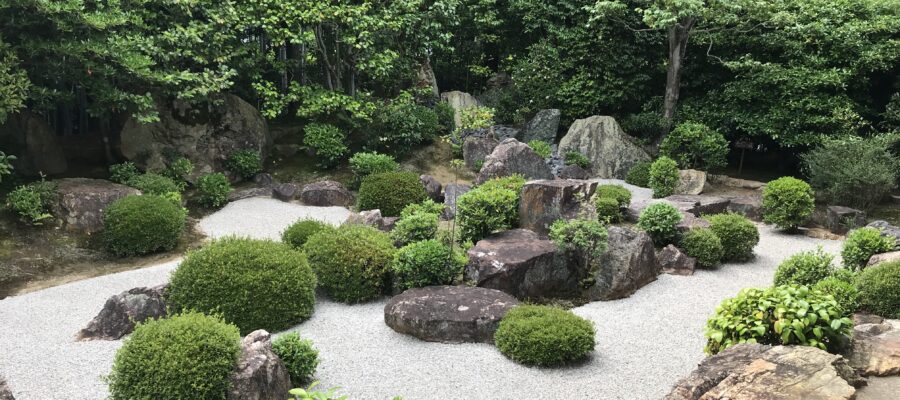妙心寺の庭と言えば退蔵院?
妙心寺で一番知られているお庭と言えば、やはり退蔵院を挙げる人が多いのではないでしょうか。私もその一人です。何度も足を運んでいますし、留学生を招いて座禅、庭園鑑賞、精進料理の体験ツアーを企画したりもしました。
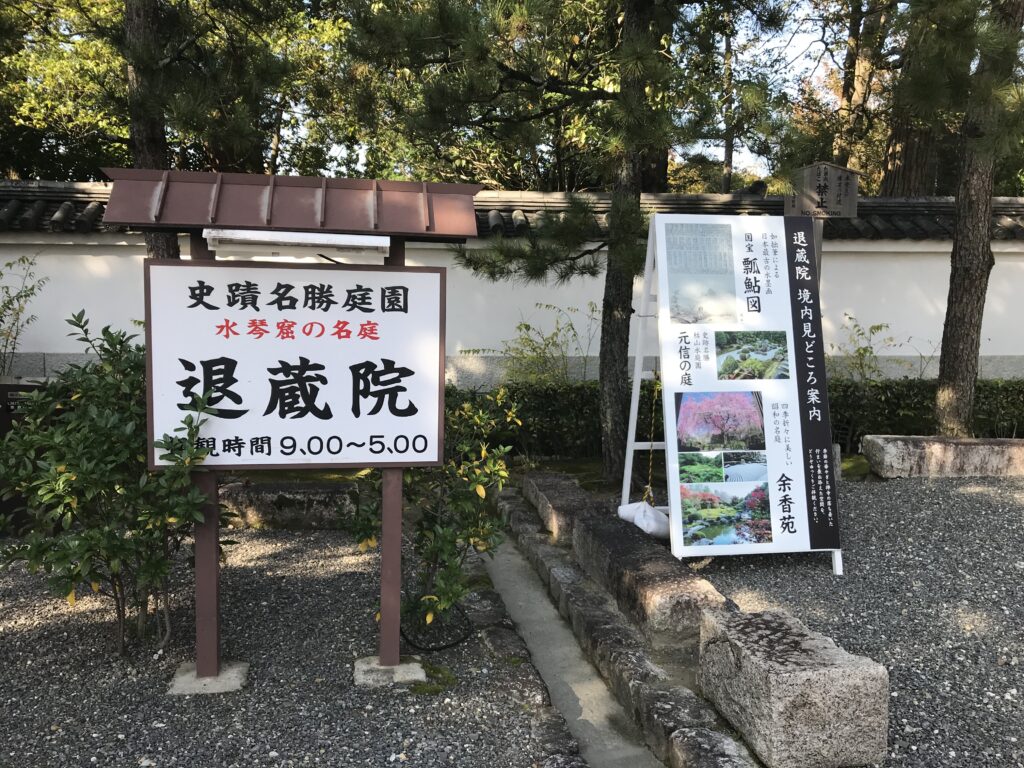
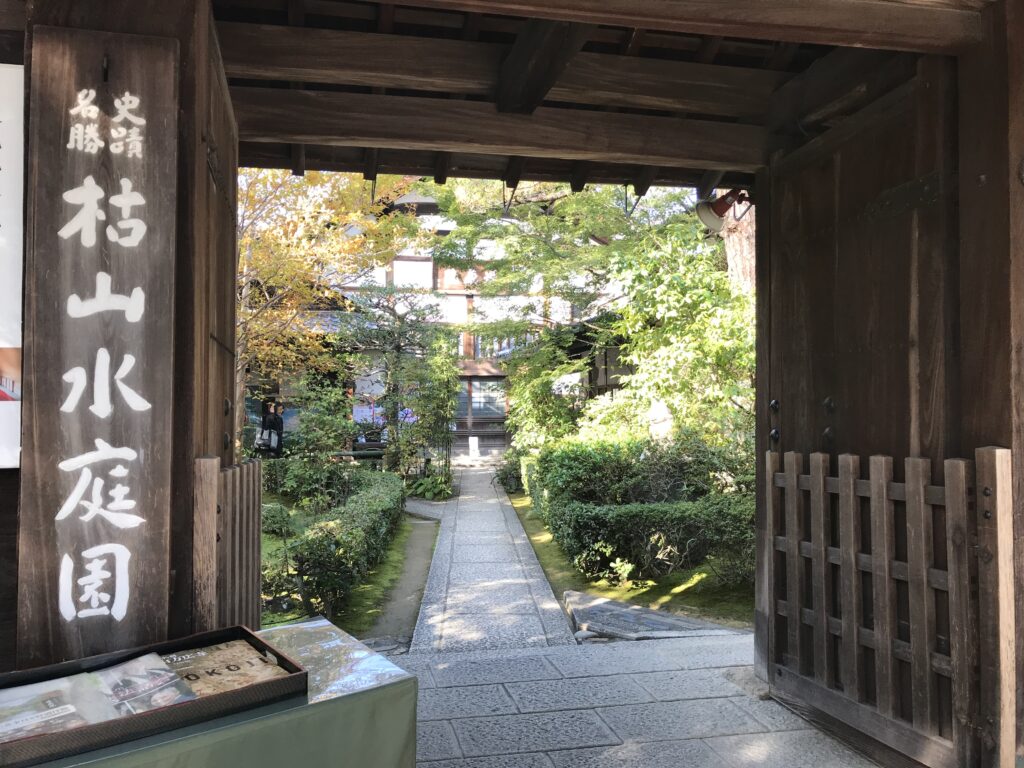
瓢鮎図と珍答・迷答
三門をくぐって、正面に建つ庫裏の脇を通って、方丈のある庭に着きます。まずは、方丈に上がって、かの有名な瓢鮎図のコピーを見ます。オリジナルは国宝で、京都国立博物館に寄託されています。ぬるぬるしてつかみ難いナマズを瓢箪で捕まえるお題に対して、さまざまな珍答・迷答といえば失礼ですが、回答を記したユーモラスな絵です。
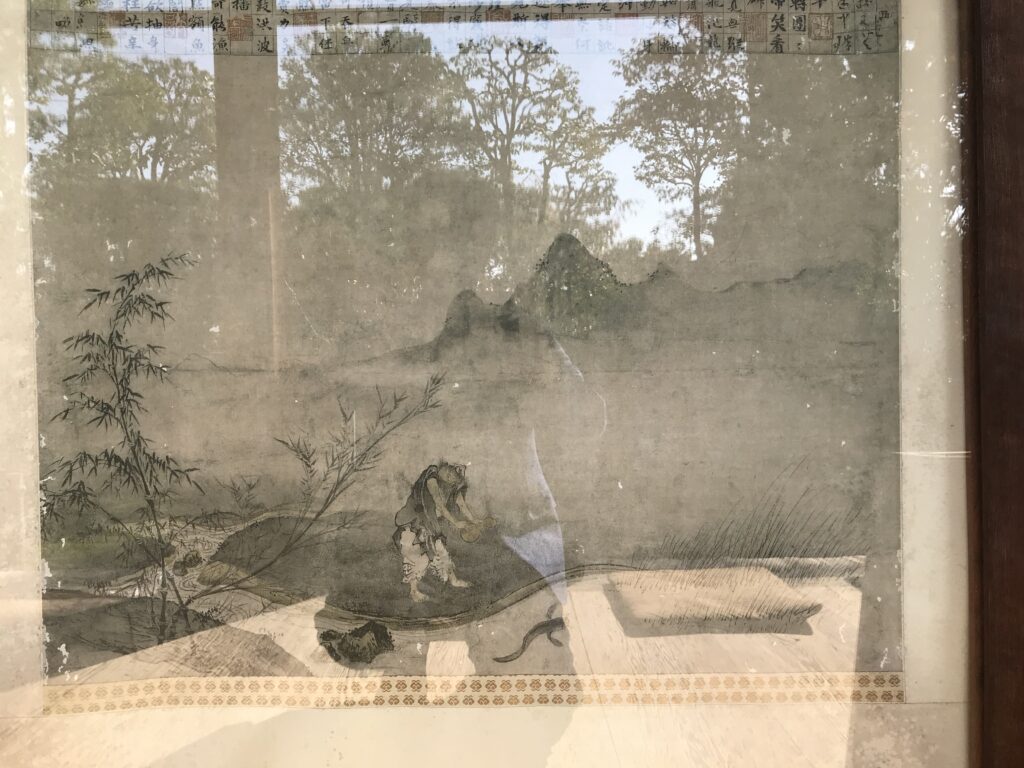
元信の庭を探せ!
この方丈から元信の庭が見えると聞いていたので、正面の庭を見ましたが、灯篭が真ん中にある以外に、これといったものが見当たらない感じです。これが有名な庭なの?と、何枚か写真をとりましたが、納得できず、方丈の端まで行くと、何やら説明書きがあります。
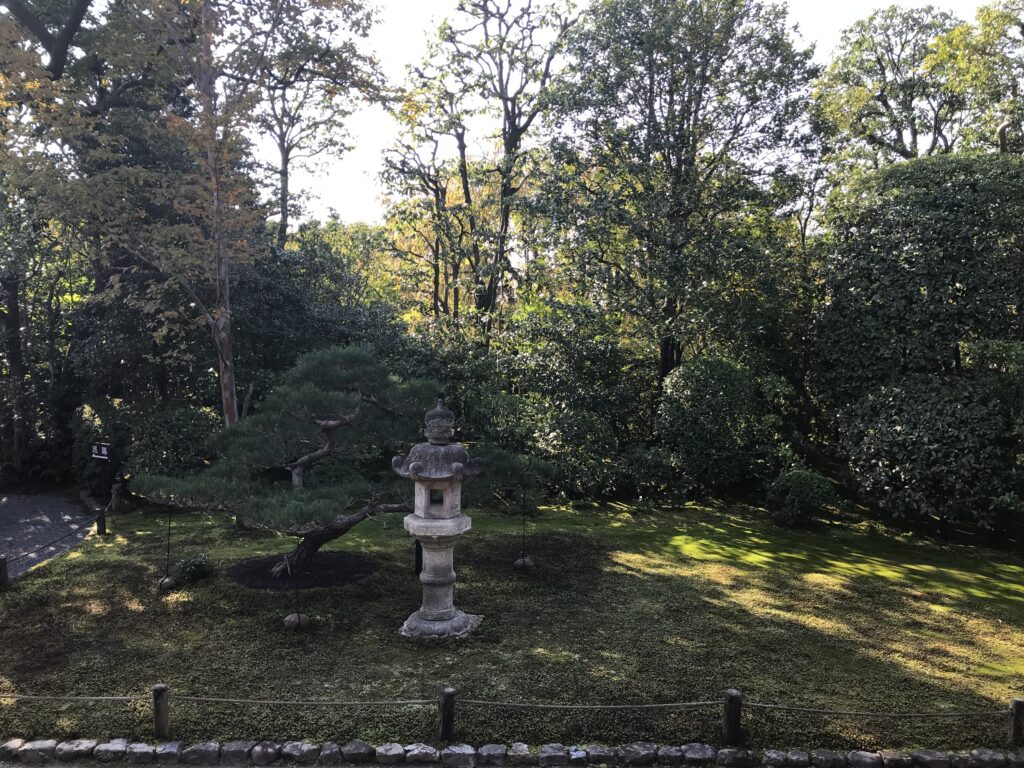
実は、この説明書きがある所こそ、元信の庭を見る場所です。気づかずに次の場所に行っている人が多いよ、と思いながら鑑賞を始めました。静止した状態で、目だけを右から左に動かしてみます。絵画的な世界が、立体感を伴って出現しています。右手奥の滝から水が流れ、石組で作られた島で2つに分かれた水の流れが、再度1つの流れに合流します。
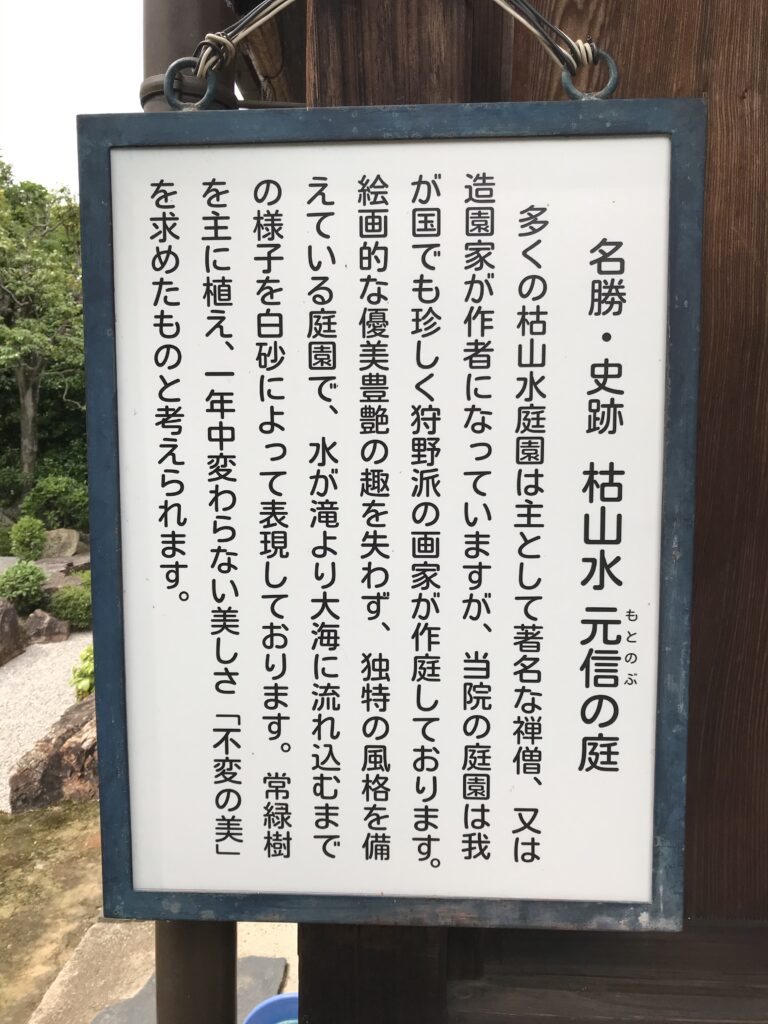
そこから左手の大海に流れていくという世界を枯山水で表現しています。テレビ番組の「美の巨人たち」で、この庭の解説を見た時にも同じ解説をしていました。白砂が水の流れに見えるイマジネーションが、自分の中にできつつあるように感じます。何度見ても飽きない、好きな庭の一つです。(完)
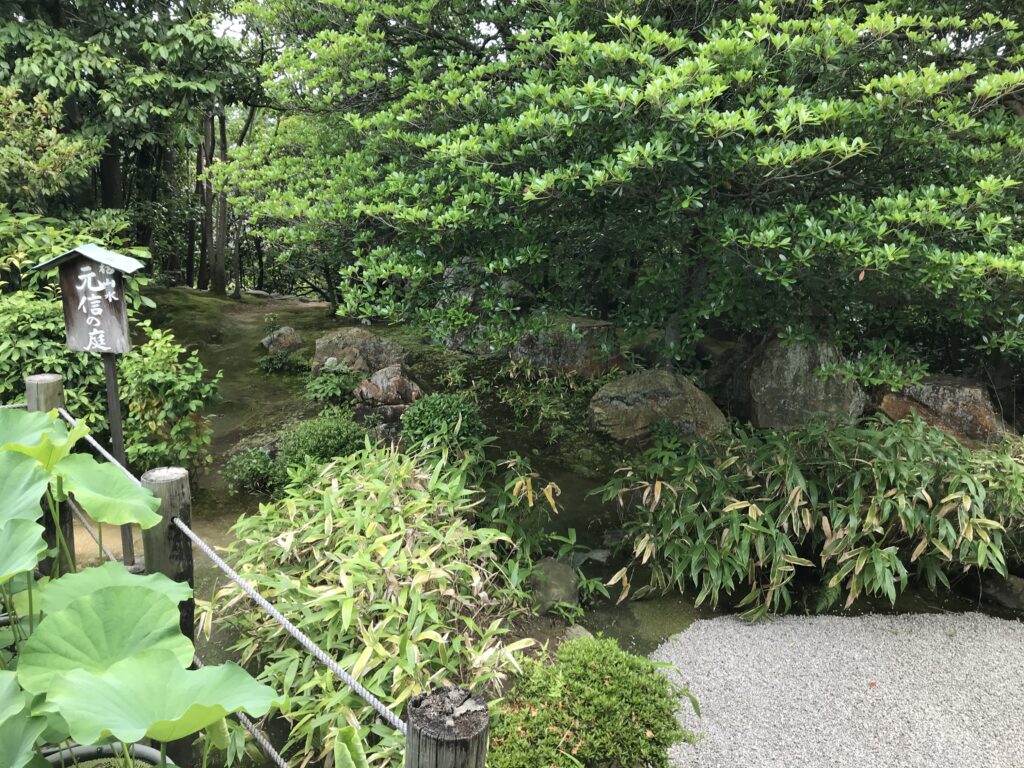
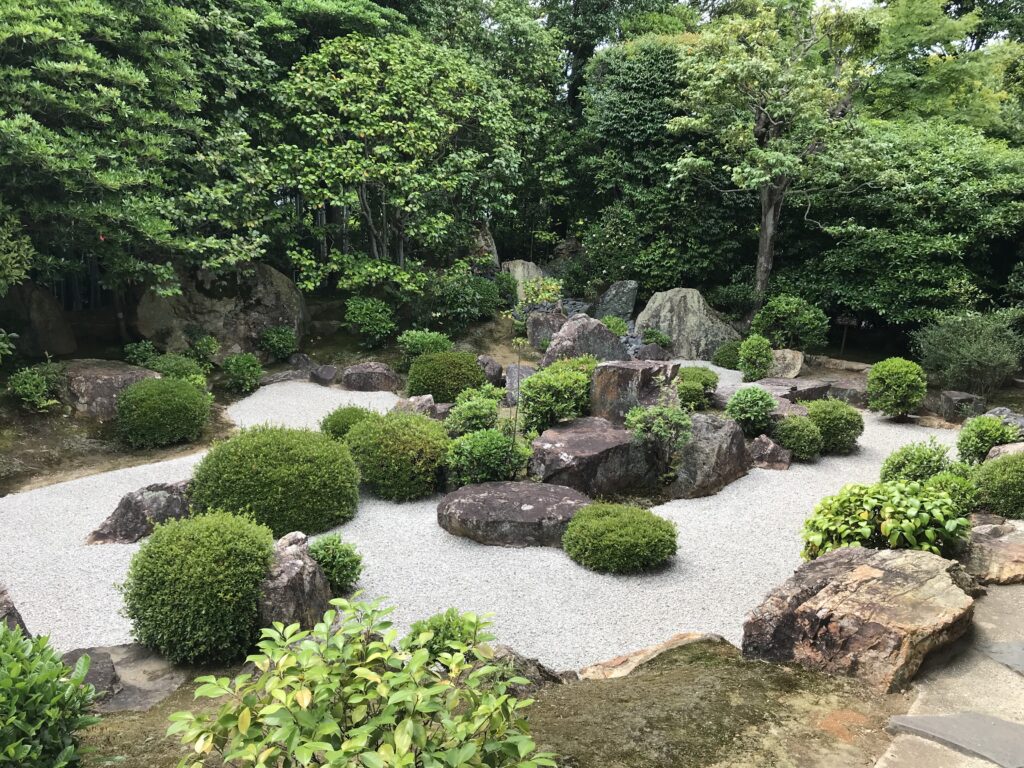
退蔵院の御朱印
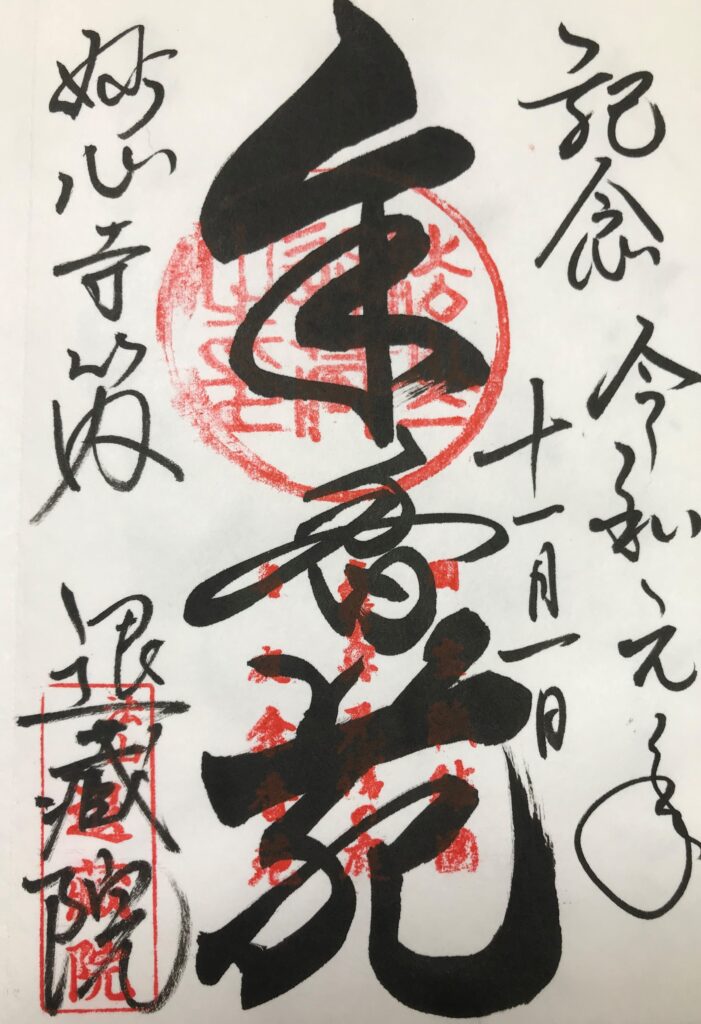
退蔵院が紹介されている本
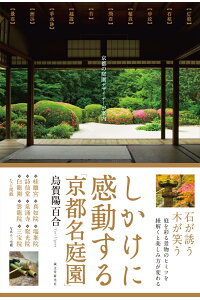
しかけに感動する「京都名庭園」 京都の庭園デザイナーが案内 [ 烏賀陽 百合 ]
価格:1,760円
(2021/5/2 18:44時点)
感想(1件)
Taizoin Temple (1) (English)
What is the garden of Myoshinji Temple?
When it comes to the most famous garden in Myoshinji Temple, many people would probably say that it is “Taizoin sub-temple”. I am one of them. I have visited the temple many times, and I have even organized a tour for international students to experience Zen meditation, garden viewing, and vegetarian cooking.
“Hyounen-zu” (the title of a famous ink brush painting) and unusual or confused answers
Passing through the Sanmon gate, I passed by the Kuri (storehouse) that stood in front of me and arrived at the garden where the Hojo was located. First, I went up to the Hojo building to see a copy of the famous Hyounen-zu painting. The original was a national treasure and was deposited in the Kyoto National Museum. It is a humorous picture of various unusual and confused answers to the theme of catching a slimy and difficult-to-grasp catfish with a gourd.
Find Motonobu’s garden!
I had heard that I could see Motonobu’s (Japanese famous painter in the 16th century) garden from this Hojo, so I looked at the garden in front of me, but other than the lantern in the middle, I couldn’t see anything of note. Is this the famous garden? I took a few pictures, but I was not convinced, so I went to the edge of the Hojo and found some explanatory notes.
As a matter of fact, the place with this description was the place to see Motonobu’s garden. I started to admire it, thinking that many people went to the next place without noticing. While standing still, I moved my eyes only from right to left. The picturesque world appeared with a three-dimensional effect. Water flows from the waterfall at the back of the right hand side, splits into two at the island made of masonry, and then merges into one again.
The dry landscape garden expresses the world of flowing from there to the great ocean on the left. I saw the same commentary on this garden on the TV program “The Giants of Beauty”. I felt that I was beginning to form an imagination in which the white sand looked like a stream of water. This is one of my favorite gardens that I never get tired of seeing no matter how many times I see it. (End)
Temple de Taizoin (1) (Français)
Quel est le jardin du temple Myoshinji ?
Lorsqu’il s’agit du jardin le plus célèbre du temple Myoshinji, beaucoup de gens diront probablement que c’est le “sous-temple Taizoin”. Je suis l’une de ces personnes. J’ai visité le temple à de nombreuses reprises et j’ai même organisé une visite pour les étudiants internationaux afin qu’ils puissent faire l’expérience de la méditation zen, de l’observation des jardins et de la cuisine végétarienne.
“Hyounen-zu” (le titre d’une célèbre peinture à l’encre) et réponses inhabituelles ou confuses
En franchissant la porte Sanmon, je suis passé devant le Kuri (entrepôt) qui se trouvait devant moi et je suis arrivé au jardin où se trouvait le Hojo. Je suis d’abord monté dans le bâtiment du Hojo pour voir une copie de la célèbre peinture Hyounen-zu. L’original est un trésor national et a été déposé au Musée national de Kyoto. Il s’agit d’un tableau humoristique présentant diverses réponses inhabituelles et confuses au thème de la capture d’un poisson-chat visqueux et difficile à saisir avec une gourde.
Trouvez le jardin de Motonobu !
J’avais entendu dire que je pouvais voir le jardin de Motonobu (célèbre peintre japonais du XVIe siècle) depuis ce Hojo, alors j’ai regardé le jardin en face de moi, mais à part la lanterne au milieu, je n’ai rien vu de particulier. Est-ce le fameux jardin ? J’ai pris quelques photos, mais je n’étais pas convaincu, alors je suis allé au bord du Hojo et j’ai trouvé quelques notes explicatives.
En fait, l’endroit correspondant à cette description était l’endroit où l’on pouvait voir le jardin de Motonobu. J’ai commencé à l’admirer, en pensant que beaucoup de gens passaient à l’endroit suivant sans le remarquer. En restant immobile, j’ai bougé mes yeux uniquement de droite à gauche. Le monde pittoresque est apparu avec un effet tridimensionnel. L’eau coule de la cascade à l’arrière du côté droit, se sépare en deux au niveau de l’île en maçonnerie, puis se fond à nouveau en une seule.
Le jardin paysager sec exprime le monde qui coule de là jusqu’au grand océan sur la gauche. J’ai vu le même commentaire sur ce jardin dans l’émission télévisée “Les géants de la beauté”. J’ai senti que je commençais à former une imagination dans laquelle le sable blanc ressemblait à un courant d’eau. C’est l’un de mes jardins préférés que je ne me lasse pas de voir, quel que soit le nombre de fois où je le vois. (Fin)
